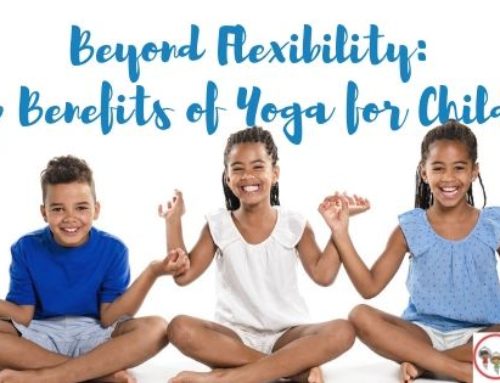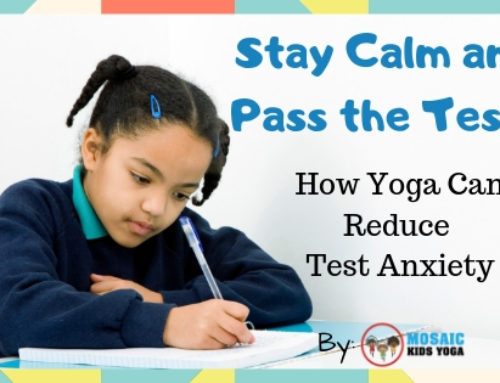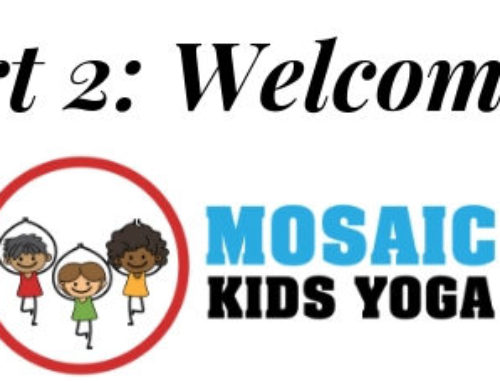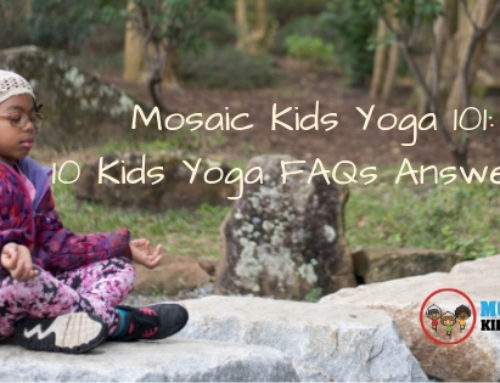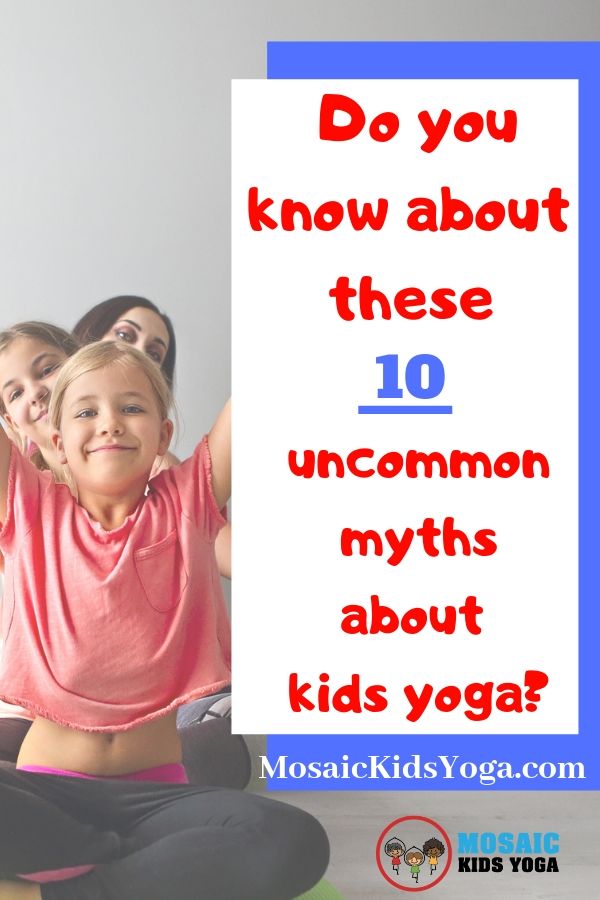
10 Myths About Yoga for Children
Every time I talk about my work teachings kids and I notice that I hear common myths and assumptions about yoga for children. Parents or adult yogis often say, “I wish I had yoga as a child” or “I wish my school had yoga.” However, these statements may or may not be true, these comments got me thinking about the common and not so common myths and assumptions about children’s yoga. As a teacher, it was important for me to recognize my own assumptions in order to better teach my students. Since there are other assumptions like this in the yoga community that I would like to address so that any aspiring yoga teacher has a better understanding of these assumptions.
Myth 1 – All children love yoga.
Unfortunately, this one isn’t completely true. In my years of teaching, I realized that some kids do not gravitate towards yoga. Consider the fact that children don’t always have the choice of whether to practice yoga or not. In some cases, yoga is a mandatory part of a school program. Other times, it’s the parent’s choice for their child to attend class. Either way, a child’s interest in yoga may not be high if they feel forced to do it. However, this creates a unique opportunity for the teacher.
As a yoga teacher, my job is to gauge the feelings and interests of the class and adjust to meet the children. My job isn’t to force them into something but to introduce elements that will make their time in yoga class meaningful. I incorporate mindful coloring for my art lovers or sketching instead of journaling. For my kids who think yoga is too calm and want more exercise, I add in yoga challenges or relays to get the heart beating.
Myth 2 -All children are flexible.
This is also not accurate. Compared to adults, yes, children may have more flexibility and mobility however, each child’s body is different. Certain poses may be easy for one child while difficult for another. The cartilage in the young joints is still developing. This makes it very important for teachers to avoid pushing children too far. Just like adults, every child has their own level of flexibility that can be increased with a consistent stretching regimen and can be lessened when out of practice.
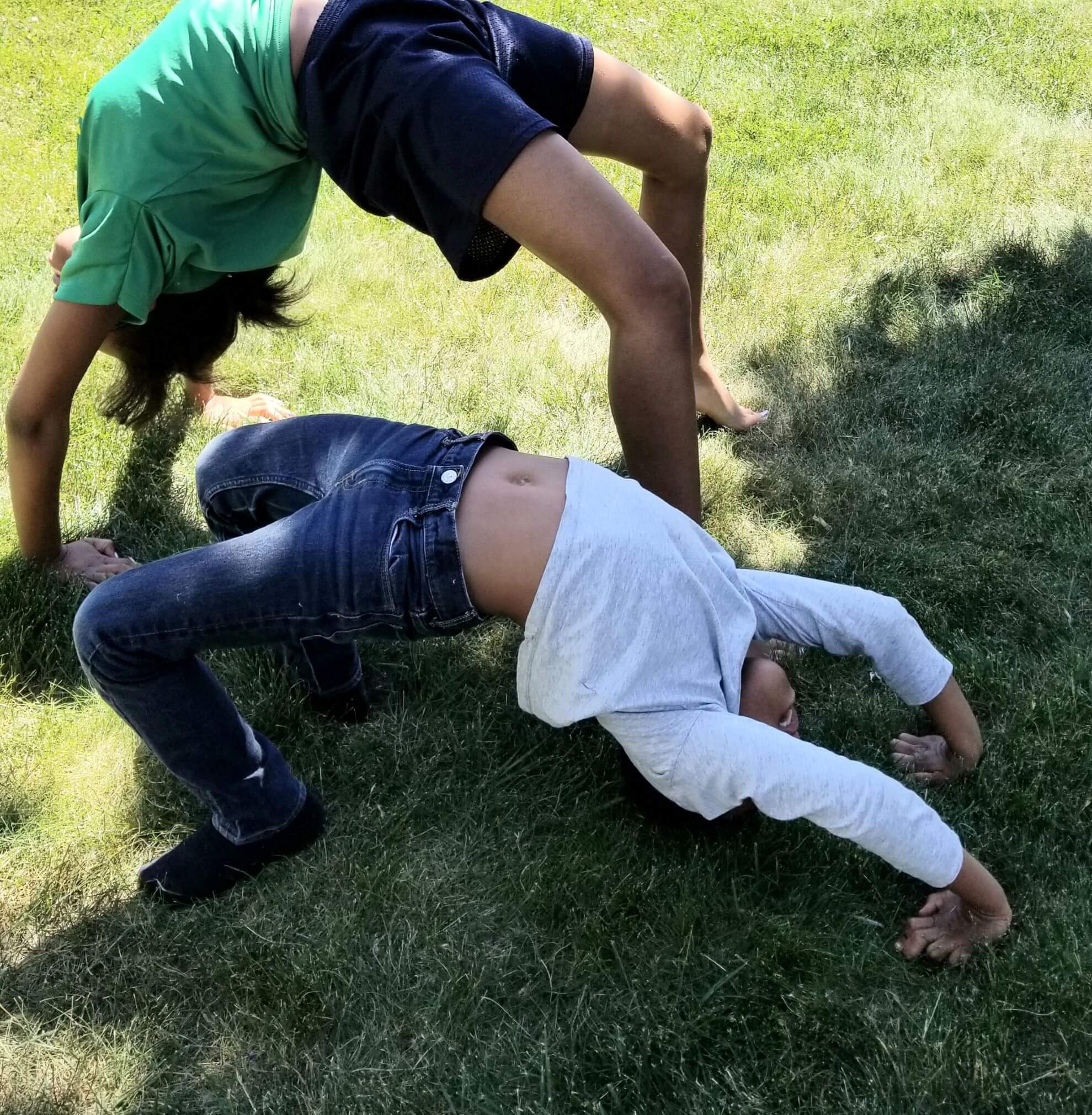
Flexibility comparison: Brother and sister demonstrating the wheel pose
Myth 3 –Children will benefit instantly from yoga.
This is the same as saying you’ll have that summer body after one set of crunches. Like most things that yield great results, it takes time. Kids don’t have this magic ability to change overnight. To achieve some of the benefits, it’s best to practice more than once a week. Therefore, I encourage my students to continue their practice at home, watching demonstrations on YouTube and preferably with the assistance of a parent.
Myth 4 – The cueing and poses are the same for children as with adults.
Not exactly, I teach both adults and children. Many adult yoga teachers come into a kids class and assume that cueing and pose names are easy to understand without considering the level of understanding the child may have. Learning names of poses can feel like learning a second language. If you are a teacher who is used to using Sanskrit or English terms for poses, your kids can get lost.
Cueing as well should be kept essential and basic. I recommend that the names of poses should include an element of imagery. This will help the children to understand what you need; i.e. stand tall like a tree. You don’t need to add as much flowering “yoga speak”. To keep cueing basic, I use the formula: body part + action verb + direction (For example left foot to the top of the mat and step right foot back)
Myth 5- Children love relaxation or savasana pose.
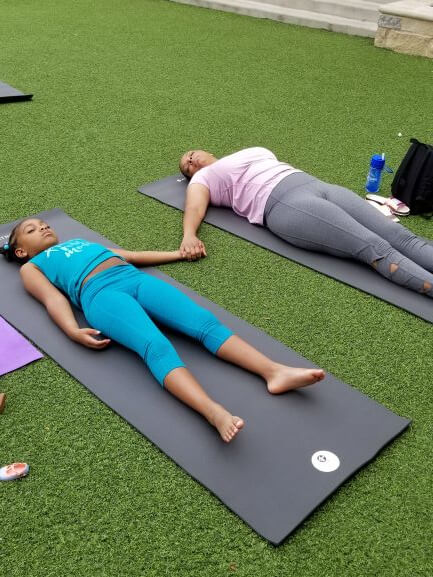
Comfort and safety from holding hands
I discovered this uncommon myth about children’s yoga during my first year of teaching. Where some kids enjoy the peacefulness found in a dim lit room, many kids can become restless and fidgety. Something to keep in mind as a children’s yoga teacher is that Savasana doesn’t always mean the same thing to each child. Trauma for some kids is a very real situation and it’s important not to assume that this “relaxation” pose is relaxing to all. This also goes for meditation or closing the eyes. Try to create a rest and relaxation time that gives kids some options such as sitting in a “criss-cross position” or lowering their gaze instead of closing their eyes will maintain the integrity of this time in class.
Myth 6 – Just like adults, children need hands-on assists.
Same with relaxation, touch can be a very sensitive subject when working with children, especially those experiencing trauma. I noticed this myth about yoga for children is the one new teachers overlook. Unless you know the child’s history or have a relationship with the child and parent, I would suggest limiting hands-on assists. Instead, try verbal cues or modeling proper alignment. If you do offer touch, be sure to ask a child if they are ok with any physical hands-on assistance and show discernment. My favorite rule to follow is less is more. You would be amazed at how a supportive touch on the back, a group hug or a high-five can go with a child’s comfort in yoga class.
Myth 7 – Yoga will instantly calm you down or cure hyperactivity.
Research shows otherwise. Yoga can leave some people relaxed while others feel energized and ready for the day. In fact, yoga is a great compliment to treatments used for ADHD, but it isn’t a cure.
Stated in ADDITUDE mag, physical activities like yoga firm up the brain and exercise turns on the attention system to enhance focus.
Myth 8 – All types of yoga are safe for children
This uncommon myth about yoga for children couldn’t be further from the truth. Yin, hot yoga and certain power yoga styles in which you move quickly or hold poses for an extended period of time can cause injury to a child who’s joints, tendons and muscles are still developing.
Younger children are more energetic and wiggly, sitting in a static position for 3 minutes or more can be uncomfortable and frustrating. Imagine this frustration multiplied if the child is in a hot yoga room. In their early stages, children are building muscle and strength. Yoga poses that support muscle development and coordination are more suited for them than Yin or even Hot yoga where the emphasis is on joint health, connective tissues and flexibility.
Unless under a doctor’s recommendation or you have a background in occupational therapy, I suggest stick with simple moves and Hatha poses that teach balance coordination and help gain strength and confidence.
Myth 9-Teaching yoga to children is easy and it’s fun and games.
I wish this one was always true, but teaching is still a balance between ease and EFFORT. Teaching children’s yoga is a mixture of classroom management, creative thinking, problem-solving and, most importantly, tapping into your inner calm. Not that you can’t love what you do, but it takes patience, work and desire to effectively leave a positive mark on a child. Although, if you ask me, it is worth every bit.
Myth 10-Children automatically understand why Yoga is good for them.
This assumption came from a parent who shared some key wisdom. She reminded me that kids may not understand or have the language to grasp what yoga can do for them. Yet, with each class, the seeds are planted. Over time, as children gain maturity, they may recall their yoga experiences as well as tap into what helped them stay calm or what moves made them feel good. As a teacher, learn how to practice the idea of non-attachment. Do your best when teaching, show love and compassion and then let go! Understand, yoga is a journey. Trust that the seeds you planted in your students will bloom and grow. As a teacher, I can almost promise, they will.
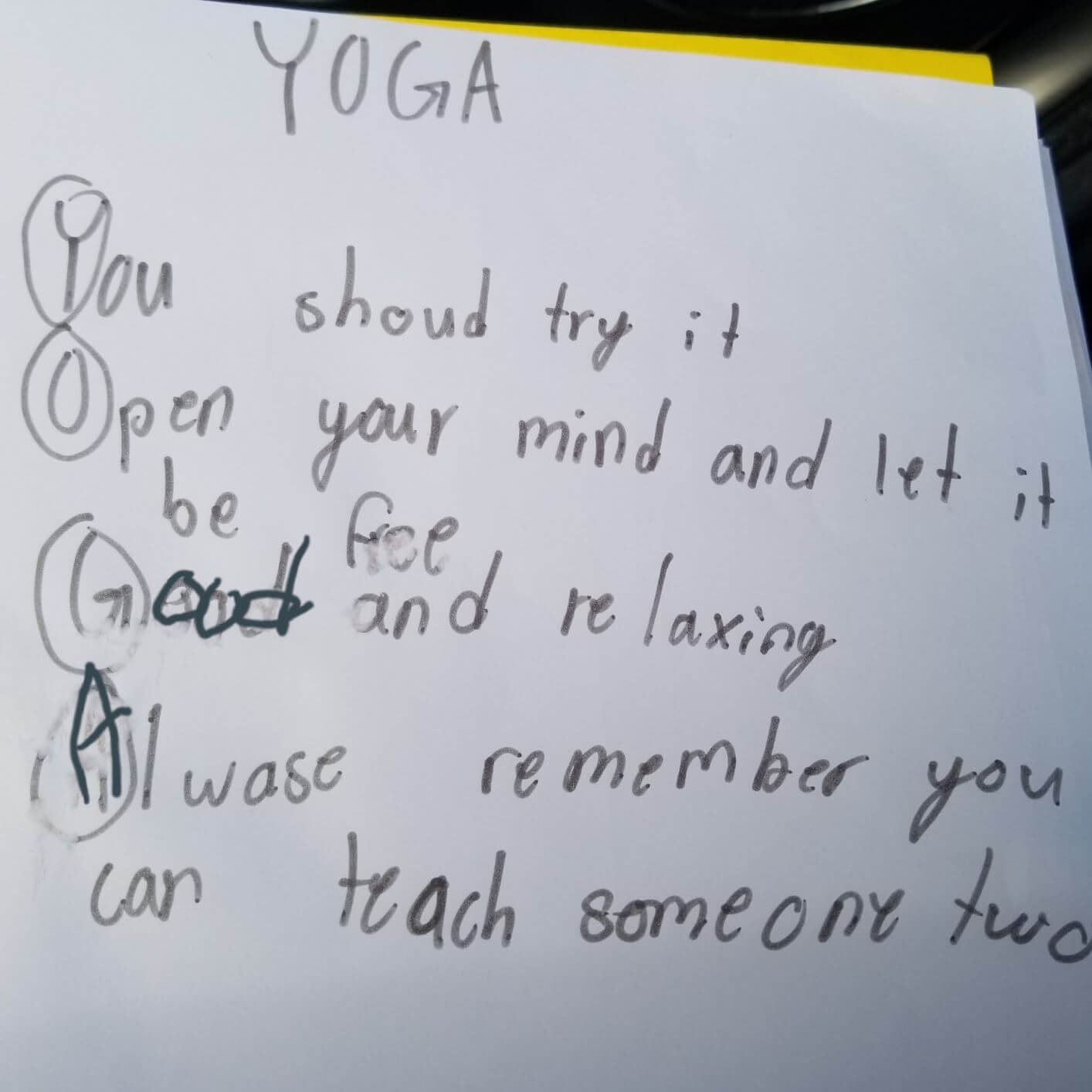
When a child understands the importance of yoga, an angel gets their wings
Any other assumptions?
These 10 assumptions or myths about yoga for children are common in the yoga community, especially to people with little to no experience teaching kids yoga. I’m glad that I was able to share this insight into children’s yoga with you. I hope that by understanding these assumptions, you can take this knowledge and become the very best yoga teacher that you can be! What are some assumptions or myths you have heard and what did you say to counter them? I would love to hear about them.


